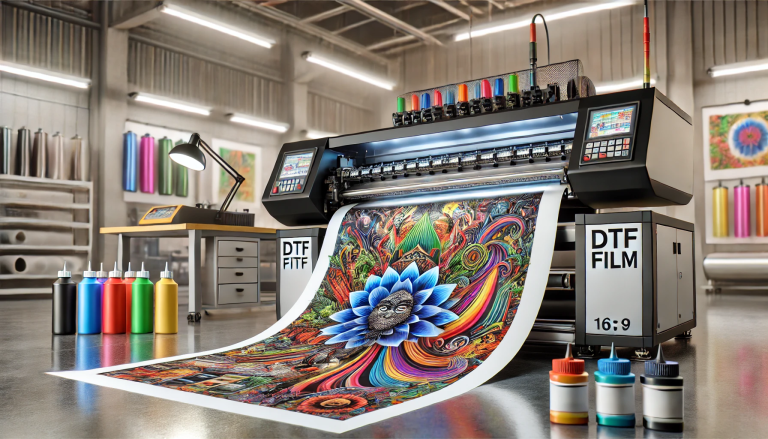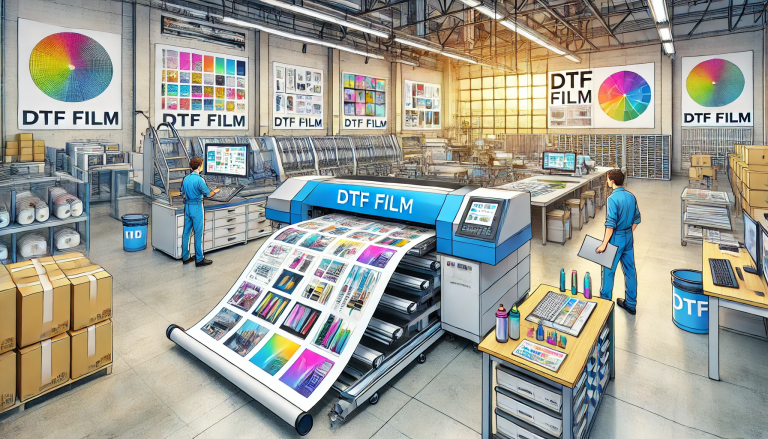“Screen Printing with DTF: Get the Look You Want, Without the Hassle!” -MAXDTF- DTF transfer tape Factory, Direct to film transfer paper Supplier, Made in China
Introduction
Is DTF the same as screen printing? This is a question that many people have when it comes to printing t-shirts and other apparel. DTF stands for Direct to Garment printing, and it is a relatively new technology that has been gaining popularity in the apparel printing industry. Screen printing is a more traditional method of printing that has been around for decades. In this article, we will discuss the differences between DTF and screen printing, and how they can be used to create unique and high-quality apparel.
Understanding the Cost Differences Between DTF and Screen Printing
When it comes to customizing apparel, there are two popular methods of printing: Direct to Garment (DTF) and Screen Printing. Both methods have their advantages and disadvantages, and the cost of each can vary depending on the project. Understanding the differences between the two printing methods can help you make an informed decision when it comes to selecting the best option for your project.
Direct to Garment (DTF) printing is a digital printing process that uses inkjet technology to print directly onto fabric. This method is ideal for printing small quantities of garments, as it requires no setup or additional materials. DTF printing is also great for printing complex designs with multiple colors, as it can easily reproduce intricate details. The cost of DTF printing is typically lower than screen printing, as it requires less setup and labor.
Screen printing is a traditional printing method that uses a mesh screen to transfer ink onto fabric. This method is ideal for printing large quantities of garments, as it requires less setup and labor than DTF printing. Screen printing is also great for printing simple designs with fewer colors, as it can easily reproduce bold, vibrant colors. The cost of screen printing is typically higher than DTF printing, as it requires more setup and labor.
When it comes to selecting the best printing method for your project, it is important to consider the cost differences between DTF and screen printing. DTF printing is typically more cost-effective for small quantities of garments, while screen printing is typically more cost-effective for large quantities of garments. Understanding the cost differences between the two printing methods can help you make an informed decision when it comes to selecting the best option for your project.
The Pros and Cons of DTF and Screen Printing
DTF (Direct to Fabric) and Screen Printing are two popular methods of printing designs onto fabric. Both have their advantages and disadvantages, and it is important to understand the differences between them in order to make an informed decision when selecting a printing method.
The main advantage of DTF is that it is a digital printing process, meaning that it is fast and efficient. It is also cost-effective, as it requires minimal setup and no screens or plates. Additionally, it is capable of producing high-quality prints with a wide range of colors and textures. The main disadvantage of DTF is that it is not suitable for printing on dark fabrics, as the colors may not be as vibrant as they would be with other printing methods.
The main advantage of Screen Printing is that it is capable of producing vibrant, high-quality prints on both light and dark fabrics. It is also a cost-effective method, as it requires minimal setup and no plates or screens. Additionally, it is capable of producing large quantities of prints quickly and efficiently. The main disadvantage of Screen Printing is that it is a labor-intensive process, as each color requires a separate screen.
In conclusion, both DTF and Screen Printing have their advantages and disadvantages. It is important to consider the type of fabric, the desired print quality, and the quantity of prints when selecting a printing method. Ultimately, the best method will depend on the individual needs of the project.
How to Choose the Right Printing Method for Your Project
When it comes to printing a project, it is important to choose the right printing method for the job. Different printing methods have different advantages and disadvantages, so it is important to consider the project’s needs before making a decision. Here are some tips to help you choose the right printing method for your project.
First, consider the size of the project. Different printing methods are better suited for different sizes. For example, digital printing is ideal for small projects, while offset printing is better for larger projects.
Second, consider the type of material you are printing on. Different printing methods are better suited for different materials. For example, digital printing is ideal for paper, while screen printing is better for fabric.
Third, consider the quantity of the project. Different printing methods are better suited for different quantities. For example, digital printing is ideal for small quantities, while offset printing is better for larger quantities.
Fourth, consider the quality of the project. Different printing methods are better suited for different levels of quality. For example, digital printing is ideal for basic quality, while offset printing is better for higher quality.
Finally, consider the cost of the project. Different printing methods have different costs associated with them. For example, digital printing is usually less expensive than offset printing.
By considering the size, material, quantity, quality, and cost of the project, you can choose the right printing method for your project. With the right printing method, you can ensure that your project looks great and meets your needs.
What Are the Benefits of DTF Over Screen Printing?
Digital Transfer Printing (DTF) is a modern printing technique that has become increasingly popular in recent years. It offers a number of advantages over traditional screen printing, making it an attractive option for many businesses.
One of the main benefits of DTF is its cost-effectiveness. The process is much faster than screen printing, meaning that fewer resources are needed to produce the same number of prints. This makes it a more affordable option for businesses that need to produce large quantities of prints. Additionally, DTF does not require the use of screens, which can be expensive to produce and maintain.
Another advantage of DTF is its versatility. The process can be used to print on a wide variety of materials, including fabrics, plastics, and metals. This makes it ideal for businesses that need to produce prints on a variety of surfaces. Additionally, DTF can be used to produce prints with intricate details and vibrant colors, making it a great choice for businesses that need to produce high-quality prints.
Finally, DTF is a much cleaner process than screen printing. The process does not require the use of inks or solvents, which can be hazardous to the environment. Additionally, the process does not produce any hazardous waste, making it a much more eco-friendly option.
Overall, DTF offers a number of advantages over traditional screen printing. It is a cost-effective, versatile, and eco-friendly printing option that can be used to produce high-quality prints on a variety of surfaces. For these reasons, it is an attractive option for many businesses.
Exploring the Differences Between DTF and Screen Printing
DTF (Direct to Fabric) and screen printing are two popular methods of printing designs onto fabric. While both methods are effective, there are some key differences between them that should be considered when deciding which method to use.
The first difference between DTF and screen printing is the type of fabric that can be used. DTF is best suited for natural fabrics such as cotton, linen, and silk, while screen printing is better for synthetic fabrics such as polyester and nylon. DTF is also more suitable for printing on delicate fabrics, as the ink is applied directly to the fabric without the need for a screen.
The second difference between the two methods is the level of detail that can be achieved. Screen printing is capable of producing more intricate designs with greater detail than DTF. This is because the ink is applied through a mesh screen, which allows for finer lines and more intricate patterns.
The third difference is the cost. DTF is generally more expensive than screen printing, as it requires specialized equipment and more time to complete. However, DTF is often more cost-effective in the long run, as it produces higher-quality prints that last longer.
Finally, the fourth difference is the turnaround time. Screen printing is typically faster than DTF, as it requires less time to set up and complete. However, DTF is often more reliable, as it produces consistent results with each print.
In conclusion, DTF and screen printing are both effective methods of printing designs onto fabric. However, there are some key differences between them that should be considered when deciding which method to use. DTF is best suited for natural fabrics, produces higher-quality prints, and is more reliable, while screen printing is better for synthetic fabrics, produces more intricate designs, and is faster.
Conclusion
In conclusion, DTF and screen printing are two different processes that are used to create custom designs on fabric. While both processes involve the use of ink, DTF is a digital process that uses a special printer to apply the design, while screen printing is a manual process that involves the use of a mesh screen and a squeegee to apply the design. Both processes have their advantages and disadvantages, and the choice of which process to use will depend on the specific needs of the project.




